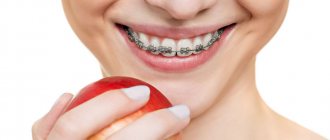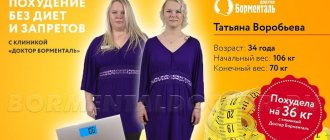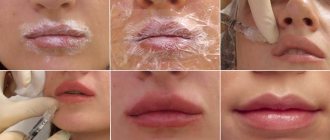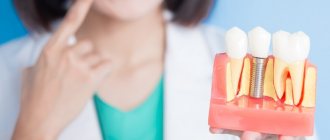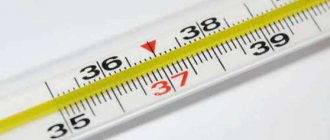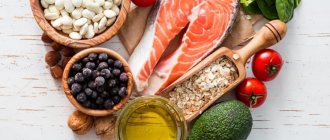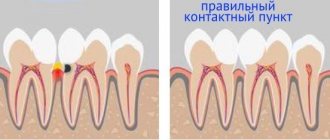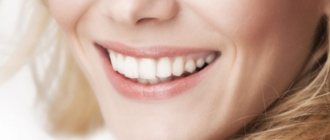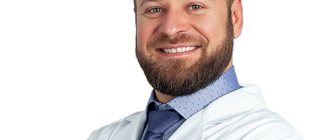Every person involved in sports carefully monitors their diet. Not only how many calories will be burned, but also what muscles will be built, what kind of relief will be obtained and how the athlete will feel depends on sports activities and exercises. A dietary or high-calorie menu meets the same goals. For professionals, each meal is determined not by taste, but by the combination of fats, proteins and carbohydrates. In this article we will find out how many hours later and what you can eat after training, and whether this will harm the result.
How nutrition shapes our body
What we eat determines how we look. Most of the population is unhappy with what the mirror reflects, and there are two categories of people:
- those who want to lose excess weight;
- looking to gain muscle mass.
How fat loss and gain occurs
In the battle between the scale dial and delicious buns, calories are decisive. These are units of energy. Our body needs a charge to set all parts of the body in motion, to continue the non-stop work of all internal organs, we take it from food. Previously, during the period of difficult food production, a person needed more strength for daily work - for cultivating the land, for long walks. At the same time, the products were often low in calories - vegetables and fruits, vegetable oil.
Modern life simultaneously improved conditions in two directions:
- Daily energy consumption decreased - transport appeared, an elevator and an escalator were designed. To avoid unnecessary movements, they even created a remote control. Working in an office at a computer practically does not disturb a person’s state of rest.
- The calorie content in purchased provisions has increased - candy, cakes, fast food, carbonated sweet drinks - these are just time bombs in packaging. One bar of chocolate contains one fourth of the daily food requirement, despite the fact that we usually eat it with tea for dessert. And few people are interested in fruits in their pure form anymore - it’s more economical and convenient to buy juice, which contains a lot of sugar.
These two trends have led to an oversupply of unspent calories.
They are perceived by the body as reserves and are converted into fat reserves. To get rid of this safety net of fat, you need to create an energy deficit, that is, spend more than you take in. Then you will have to use up your reserves. This can be achieved in the following ways:
- Train a lot, while choosing aerobic exercise, that is, cardio exercises of moderate difficulty. This allows glucose to be taken out of cells using oxygen. You can achieve a more effective anaerobic threshold, but then the exercises will be too intense for the cardiovascular system and an unprepared person in general.
- Reduce your diet - don’t eat after 6, monitor the amount of calories, create deficit conditions for the body.
But the most effective way is to combine these two methods, that is, increase consumption and reduce energy supply.
However, this must be done gradually so that the shaking is not perceived as stress, otherwise the reverse process may occur. Instead of giving away fat reserves, the body will fight for every deposit. In winter, watch out for sportswear, choose ski suits from the Stayer brand. Due to the cost of heating the body, the energy balance may be disrupted, not to mention the fact that you may simply get sick. Dress warmly and comfortably during the winter season.
When can you eat solid food?
Any solid food should be returned to the diet after the wound has completely healed and the pain has stopped. The recovery time depends on various factors: the patient’s age, the complexity of the extraction, the location of the extracted tooth, and existing diseases. A major role in rapid healing is played by the patient’s compliance with all prescriptions and recommendations of the dentist.
Typically this process takes from several days to 1-2 weeks. If the removal was difficult, it may take up to 3-4 weeks. Only after this is it recommended to consume too hard foods without additional heat treatment.
- What medicine is put into the hole after tooth extraction?
You can eat solid foods once the socket has healed.
Video: How long after tooth extraction can you eat?
Proper nutrition before and after strength training
The second process associated with exercise and food is gaining muscle mass. Most athletes develop a special high-calorie menu with a lot of protein. The concept of calories is not the main concept here. Their quality is important here. The energy content of the product is measured along with the composition of each dish: the number of carbohydrates, fats and proteins per 100 grams.
Each substance has its own function:
- Sugars are the first source of energy, which is why there are so many kilojoules in sweets. Its excess makes people very energetic.
- Lipids are storage cells for storing energy-intensive substances. Fatty dishes are rich in these elements, so the body stores fat deposits from them.
- Proteins are building materials, without which muscle growth does not occur. It is found in meat, dairy products, and some legumes.
The balance of these substances leads to the simultaneous harmonious occurrence of all processes:
- there are enough carbohydrates in the blood for everyday activities, there is enough energy in the required amount;
- a small proportion of fat guarantees better breakdown of other microelements;
- muscle mass increases due to protein and physical activity.
So there are three types of food:
- low calorie;
- protein;
- balanced.
In everyday life, you need to stick to the last option, but there are cases when you should pay closer attention to the menu.
What diseases can cause removal of the uterus
For normal functioning of the uterus, a woman must have hormonal balance. After the removal of an organ, a woman’s metabolic processes in the body are disrupted, and the main thing during this period is to normalize them, restore hormonal levels and increase the ability to recover so that the sutures heal as quickly as possible.
There are many reasons why a woman may have an organ removed:
- oncology;
- myoma;
- endometriosis;
- pelvic inflammatory diseases.
In any of these cases, diet becomes a “lifeline” for quick and high-quality restoration of the female body. Serious interference with the reproductive system has a negative impact on physical and emotional health. Therefore, a woman needs to survive this condition more gently, replenishing her diet with the necessary elements to improve her overall health.
How long after training can you eat, and what to eat beforehand?
When you are actively exercising, you find the optimal period - before or after work, in the evening before bed, or 2-3 times a week, but in any case, you start exercising between meals.
Let's look at a few popular options.
Exercising or jogging early in the morning before breakfast
To this day, trainers argue about the usefulness of training on an empty stomach. A common belief is that there is little glycogen left after sleep, so the body will break down the fat layer
Opponents of this theory argue that morning exercise leads to muscle weakening.
If you choose this option, then you don’t need to eat anything at all before exercise, but you should drink a glass of clean water 15-20 minutes before starting. This rhythm is suitable for short runs and other moderate-intensity aerobic exercise. Strength complexes should not be performed before the first meal.
You can eat in 20-30 minutes. During this time, active processes of lipid breakdown will take place; you should not wait longer.
Workout in the morning after a light snack
If you feel that you cannot start exercising without a light breakfast, then give preference to small, but carbohydrate-rich portions. Good fit:
- bananas;
- cereal cookies;
- a piece of cheese with coffee;
- granola bar;
- a glass of medium-fat dairy products.
But such a menu should fit into 100-150 grams, so as not to create heaviness, but only to replenish strength.
It is better to eat a full breakfast 30 minutes after training, which will replenish the energy spent.
Exercise during the day, afternoon or evening
If you do not exercise in the morning, you should first make a snack of complex carbohydrates - cereals, fruits, vegetables - 1.5-2 hours beforehand. Many people believe that you need to give preference to proteins, but this is not entirely true - meat will weigh down your digestive system, but will not provide enough energy - it will be difficult for you to move, your strength will not last long. Protein foods are suitable for replenishing energy costs after exercise so that muscles do not lose their elasticity.
Results
So, the Labor Code of the Russian Federation provides all employees who have worked for a new employer for 6 months with the right to receive leave at a time convenient for them during the first year of work. At the same time, preferential categories of employees can take leave earlier than the minimum required period.
Sources: Labor Code of the Russian Federation
You can find more complete information on the topic in ConsultantPlus. Free trial access to the system for 2 days.
What to eat after training: athlete's menu
All recommendations should be divided into two categories according to their objectives:
- to burn excess weight;
- for gaining weight and working on a sculpted body.
But there are common tips for any type of activity:
- Maintain a balance of nutrients. 50-60% are carbohydrates. With their help, you will fill the carbohydrate window that you created during exercise. Proteins should be up to 30%. These are the building blocks from which muscles are built. But this will not happen without the influence of fats, so the remaining 10-15% comes from lipids.
- Be careful about the quality of the products. Avoid fast food and processed foods. The best food is primary processed. Pasta and baked goods made only from durum wheat, possibly with the addition of bran; vegetables and fruits – fresh; meat and fish - not in the form of purchased minced meat, but in large pieces.
- Regardless of the purpose and method of exercise, after exerting force on the machines, take two meals. The first is a snack. It should consist of quickly digestible proteins and carbohydrates. This could be a candy bar or a glass of a protein shake. You need to drink it within half an hour. A full meal is after an hour and a half.
What can you eat after strength training for muscle growth?
In the first 30 minutes, it is necessary to close the anabolic window. Fast carbohydrates with a high glycemic index will help do this. Perhaps this is the only time when it is useful to use them. This way you will raise the level of insulin in the blood and prevent catabolic processes - the destruction of muscle mass.
You can eat:
- buckwheat, oatmeal, pearl barley, semolina or other porridge;
- rice;
- pasta from durum wheat;
- bran bread;
- as a complement to cereals - honey, butter, nuts, bananas and other high-carbohydrate fruits;
- freshly squeezed juice (watermelon and pomegranate will also help relieve muscle pain);
- cottage cheese and any other dairy products;
- poultry, pork, beef;
- fish;
- chicken or quail eggs.
What is the best thing to eat after a cardio workout?
If you want to lose weight, then you need to achieve a calorie deficit. Ideally, you should not eat for another 2-3 hours. But after jogging, be sure to drink a glass of clean water, this will temporarily suppress the feeling of hunger and allow the body to use fat reserves for energy. Metabolic processes will continue to rid the blood of released lipids for a long period.
When enough time has passed, you can eat:
- eggs or protein-rich lean meat;
- dried fruits – fresh fruits are best consumed before exercise;
- whole wheat bread;
- seafood, especially squid;
- low-fat yoghurts and cottage cheese;
- boiled or stewed vegetables.
You should exclude fast carbohydrates in the form of chocolates and bars and increase your fluid intake.
Fresh water and unsweetened green tea will do. Outdoor training requires more energy, so in winter athletes need to eat more and choose warm equipment. offers down jackets and overalls made from modern synthetic fabrics and innovative fillers that last a long time and do not wear out.
Why is it important to follow your dentist's recommendations?
Modern methods and technologies for caries treatment, which are used by doctors in dental clinics, help quickly, painlessly and effectively solve the problem of dental caries. If the doctor correctly selected the filling material and installed the filling in compliance with all technological details, the restored tooth can serve the patient for many years.
But, in addition to the professional work of the doctor and the quality of materials, the durability of the filling is affected by compliance with the dentist’s recommendations immediately after caries treatment.
One of the first questions to ask your doctor is when you can drink water and have lunch or dinner after dental treatment.
Principles of a therapeutic diet
Food products for food after gastric ulcer surgery are subjected to heat treatment in the form of boiling in water or steaming, stewing, baking. Liquid, soft and puree foods are easily digestible. To ease the load on the gastrointestinal tract, you can use separate nutrition, which consists of consuming one product at one meal. It is recommended to eat 5-6 meals a day in small portions. Dishes are prepared from fresh, natural products.
Rules:
- Cereals are ground or slightly ground before cooking.
- It is better to sweeten tea with natural honey.
- Bread is consumed in the form of crackers or biscuits. Fresh bread has a negative effect on the stomach.
- Porridges occupy an important place in the diet of postoperative patients.
- Salt is consumed in very limited quantities - no more than 5-6 grams per day.
- It is acceptable to add a little butter or vegetable oil to purees or porridges.
- Food should be warm, not cold or hot.
- Hunger is contraindicated.
- Marinated, fried, smoked and salted foods are excluded.
Attention: you should not eat coarse foods with a lot of fiber.

